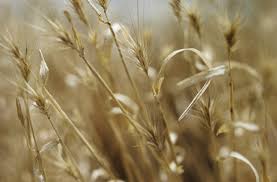The effect of bio-fertilizer (Phosphate Barvar2) on the yield and yield components of bread wheat and durum in Ahvaz region
Keywords:
Cultivar, Yield, Phosphorus, Harvest indexAbstract
In order to evaluate the effectiveness of phosphorus biological fertilizers (Barvar2) and triple super phosphate fertilizer amounts on the yield and yield components of bread wheat and durum, a split-split plot experiment within randomized completely block design with four replications in December2009 in research farm of Agriculture and Natural Resources University of Ramin in Khuzestan was carried out. The main plots were chemical fertilizer triple super phosphate (zero, 50% and 100% of phosphate fertilizers), subplots were bio-fertilizer barvar2 (control, by basal application and top dressing) and sub-subplots were wheat cultivars (Chamran and Behrang).Results showed that 50% of phosphorus with the barvar2 base led to a No. 349.54 for spike number, grain yield 3309.5kg and10932.1 kg of biomass to ensure that this amount 100% of the recommended intake of phosphorus fertilizers match. Grain weight and harvest index attributes that have not been affected by the biological fertilizer. The results of this study showed that the use of phosphorus biological fertilizer (barvar2) can be used as a substitute for a portion of the phosphorus fertilizer, without a decrease in yield occurs.
References
Alamri, S.A., Mostafa, Y.S., 2009. Effect of nitrogen supply and Azospirillumbrasilense Sp-248 on the response of wheat to seawater irrigation. Saudi. J. Biol. Sci. 16, 101-107.
Behbahani, M., 2010. Investigation of biological behavior and colonization ability of Iranian indigenous phosphate¬ solubilizing bacteria. Sci. Hort. 124, 393–399.
Chang, C.H., Yang, S.S., 2009. Thermo-tolerant phosphate-solubilizing microbes for multi-functional biofertilizer preparation. Bioresour. Technol, 100, 1648–1658.
Hameeda, B., Harina, G., Rupela, O.P., Wani, S.P., Reddy, G., 2008. Growth promotion of maize by phosphate solubilizing bacteria isolated from composts and Growth promotion of maize by phosphate solubilizing bacteria isolated from composts and. Microbiol. Res. 163, 234-242.
Iman, M., Azouni, E.l., 2008. Effect of phosphate solubilizing fungi on growth and nutrient uptake of soybean (Glycine max L.), Plants. J. Appl. Sci. Res. 4(6), 592-598.
Karthikeyan, A., Nagasathya, AShanthi, V., Priya, E., 2008. Hypersaline Cyanobacterium: A potential biofertilizer for vignamungo. L (Black Gram). Am. Eurasian. J. Sustain. Agr. 2(1), 87-91.
Ken-Jer, W., Chin-San, W., Jo-Shu, C., 2007. Biodegradability and mechanical properties of polycaprolactone composites encapsulating phosphate-solubilizing bacterium Bacillus sp. Process. Biochem. 42, 669-675.
Kizikaya, R., 2008. Yield response and nitrogen concentrations of spring wheat (Triticumaestivum) inoculated with Azotobacterchroococcum strains. Ecol. Eng. 33, 150-156.
Lihan, K., Sakin, E., 2010. The effects of increased phosphorus application on shoot dry matter, shoot P and Zn concentrations in wheat (Triticum durum L.) and maize (Zea mays L.) grown in a calcareous soil. Afr. J. Biotechnol. 9(36), 5893-5896.
¬Manske, G.B., Luttyer, A., Behl, R.K., Vlek, P., 2000. Enhancement of mycorrhiza (VAM) infection, nutrient efficiency and plant growth by Azotobacterchroococcum in wheat. Plant. Breed. 13, 78-83.
Mehrvarz, S., Chaichi, M.R., 2008. Effect of phosphate solubilizing microorganism and phosphorus chemical fertilizer on forage and grain quality of Barely (Hordeum vulgar L.). Am. Eurasian. j. Agr. Environ. Sci. 3(6), 855-860.
Nabila, M., Zaki, M.S., Gamal, M., 2007. Growth and yield of some wheat cultivars irrigated with saline water in newly cultivated land as affected by biofertilization. J. Appl. Sci. Res. 3(10). 1121-1126.
Nader, R., Amal, W., Zaki, N., 2008. Effect of organic and bio-fertilizer on phosphorus and some micronutrients availability in a Calcareous soil. Res. J. Agr. Bio. Sci. 4(5), 545-552.
Olivera, M., Iribarend, C., Lluch, C., 2002. Effect of phosphorus on nodulation and N2 fixation by bean (Phaseolus vulgaris). Proceedings of the 15th International Meeting on Microbial Phosphate Solubilization. Salamanca University, 16-19 July, Salamanca, Spain.
Rajankar, P.N., Tambekar, D.H., Wate, S.R., 2007. Study of phosphate solubilization efficiencies of fungi and bacteria isolated form saline belt of purna river basin. Res. J. Agr. Bio. Sci. 3(6), 701-703.
Ridvan, K., 2008. Yield response and nitrogen concentrations of spring wheat (Triticumaestivum) inoculated with Azotobacterchroococcum strains Journal homepage: www.elsevier.com/locate/ecoleng. 150-157.
Sharma, K., Dak, G., Agrawal, A., Bhatnar, M., Sharma, R., 2007. Effect of phosphate solubilizing bacteria on the germination of Cicerarietinum seeds and seedling growth. J. Herbal. Medi Toxi. 1(1), 61-63.
Tilak, K.V., Ranganayaki, K.K., Pal, R., De, A.K., Saxena, C., Shekhar, N., Shilpi M., Tripathi, A.K., Johri, B.N., 2005. Diversity of plant growth and soil health supporting bacteria. Current. Sci. 89, 136-150.

Published
How to Cite
Issue
Section
Copyright (c) 2020 madineh banari, Ghodratollah Fathi, Mohammad Hossein Gharineh, Alireza Abdali Abdali, Solmaz YazdanPanah

This work is licensed under a Creative Commons Attribution-NonCommercial-NoDerivatives 4.0 International License.



